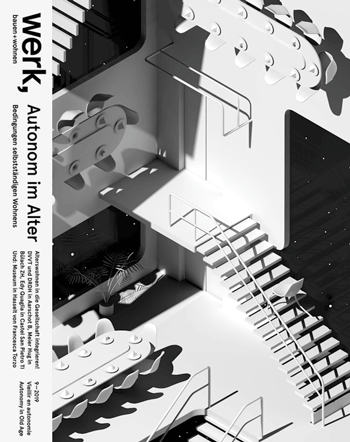werk, bauen + wohnen 9-2019

Is Housing for Old Age Really so Different?
What, in fact, does “housing for old age” actually mean? For most elderly people it signifies nothing other than what they are already familiar with: arranging how to spend the day, reading, cultivating hobbies, welcoming friends, shopping, going out. Often much of this must be done alone, after the end of the family phase, or perhaps after the death of the partner. Frequently there are restrictions, which can be just minor or perhaps more serious. Mobility declines, as does the number of tasks one can do in a day and when over 85, in “fragile” advanced age, there is the added worry about how long one will be able to remain independent without the need for help.
All of this calls for a range of housing that differs only a little to the usual kinds: integrated in public life but without barriers and of a size suitable for one or two persons. Above all, how ever, with social connections and, when one’s health is poor, the opportunity to avail of nursing care or help with the household. Might a communal form of housing not offer a better solution here? However autonomous and, in particular, communal forms of housing for the elderly or for a mix of generations are still rare. There is a lack of suitable organisational bodies — especially in the country — and of financing models and typological references. Only few communities offer a reasonable number of settlements for the elderly, while multigenerational housing is a rare exception. At present old persons homes and care homes are being newly built throughout the country. But they are not so much a form of housing as one of nursing care; the most progressive of them offer their services such as nursing care or meals to neighbouring districts in mobile form, in this way supporting independent living. Protagonists such as the Age-Stiftung are filling the gap that is left by the state and local communities. It gathers experience and knowledge from research and numerous projects, most of which have developed as the result of private initiatives.
This issue aims to bring housing for old age out of the ghetto of the institutions and to see it as an autonomous form of living that forms part of everyday social life and — like all housing — offers a chance to achieve an urban, architectural added value and to create new forms of living together — whether with people of one’s own age or in a multigenerational neighbourhood. — Daniel Kurz